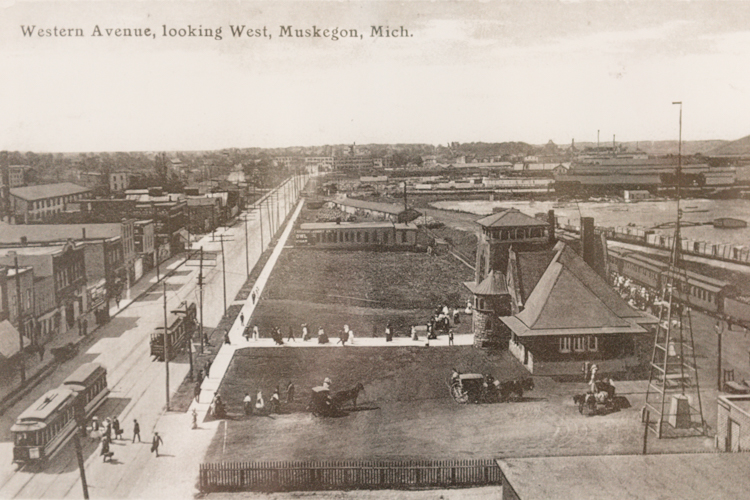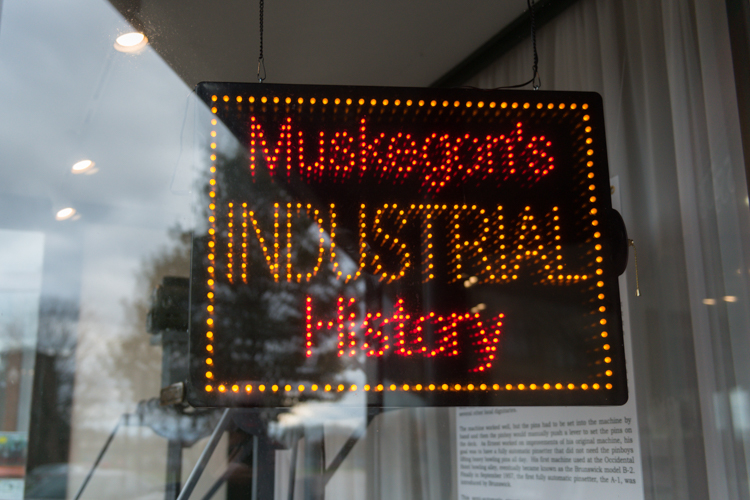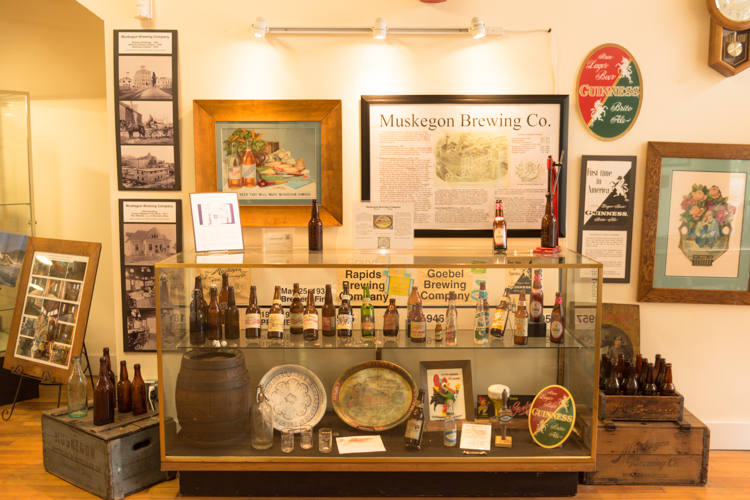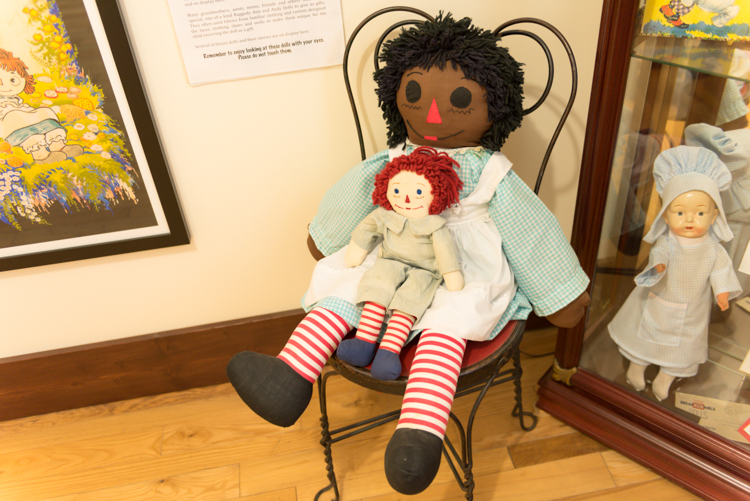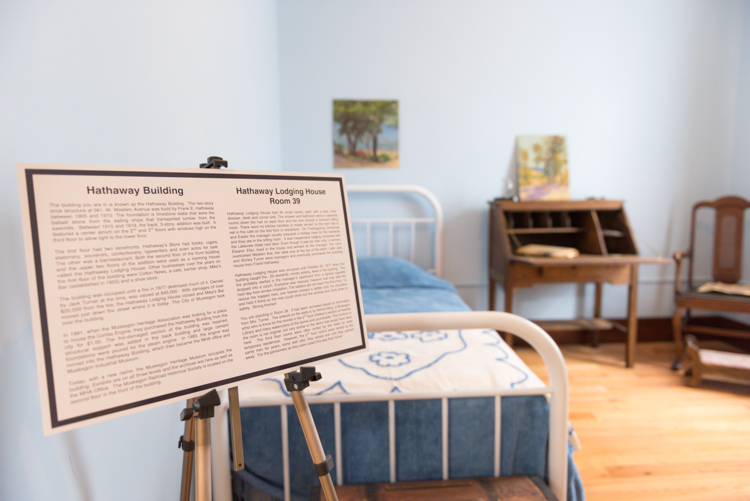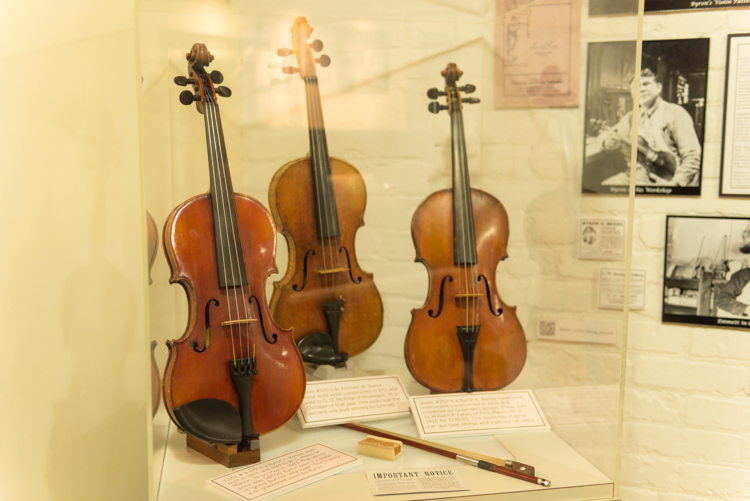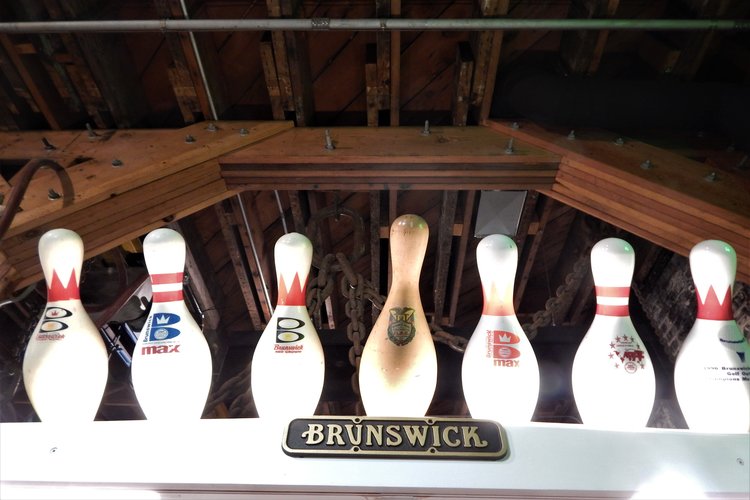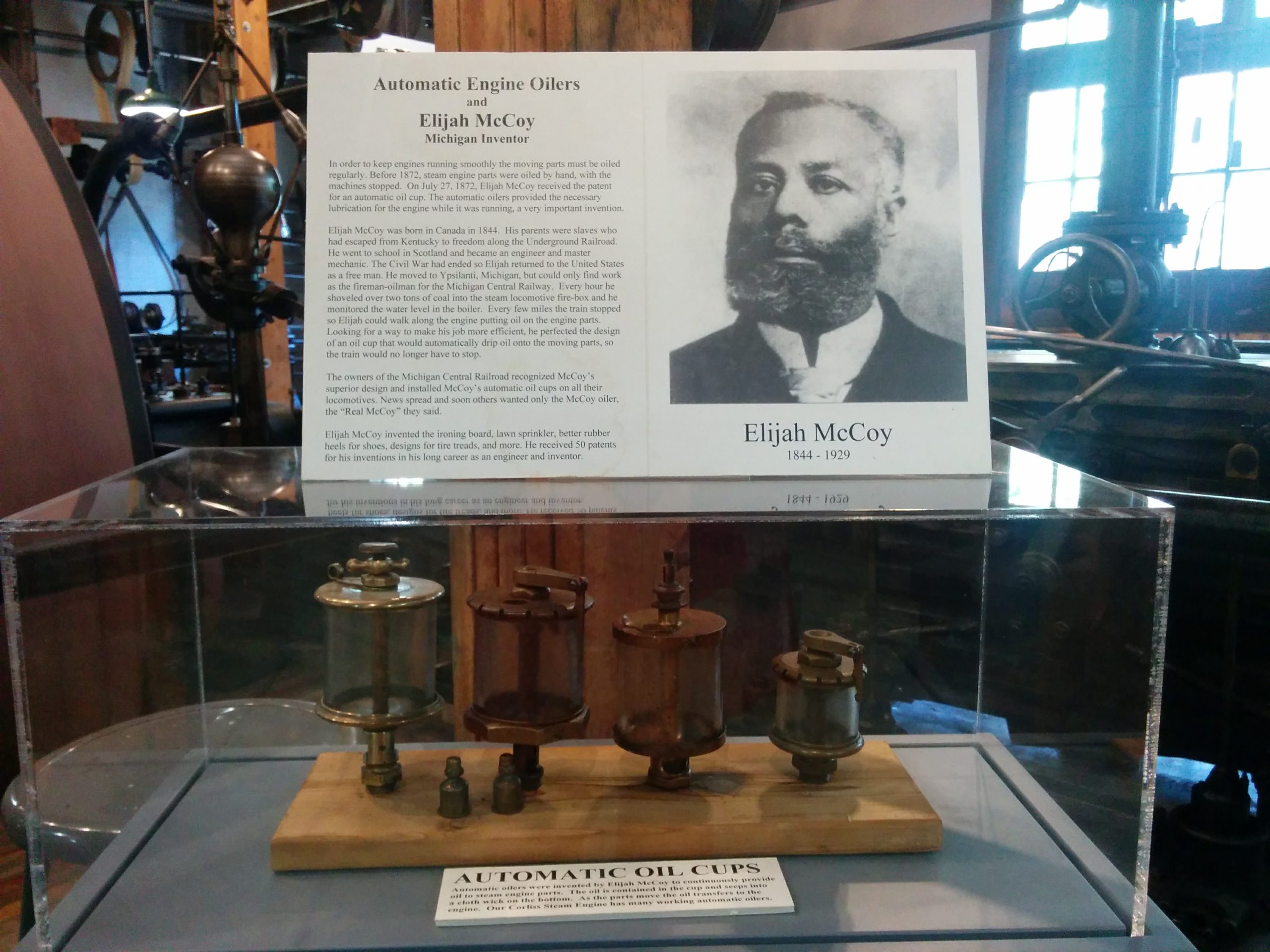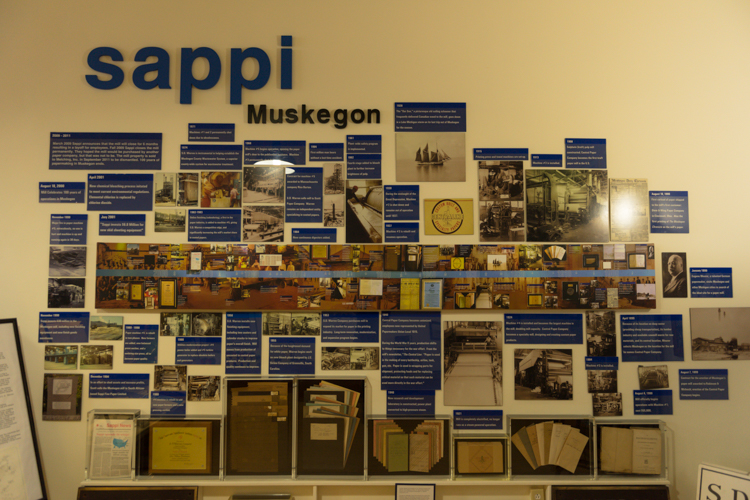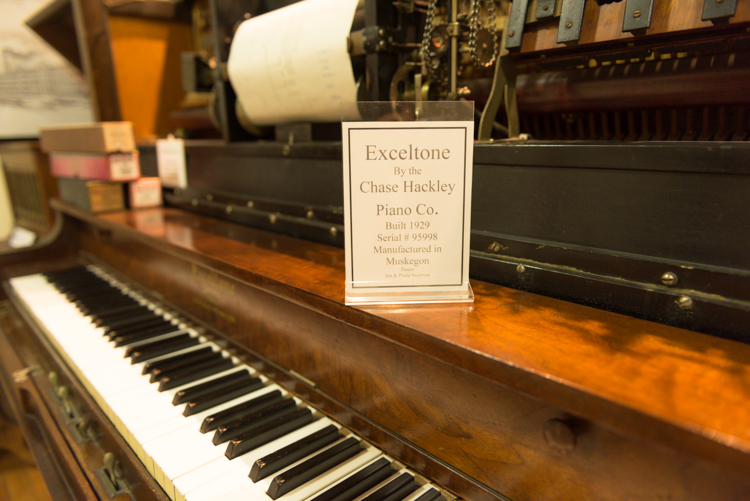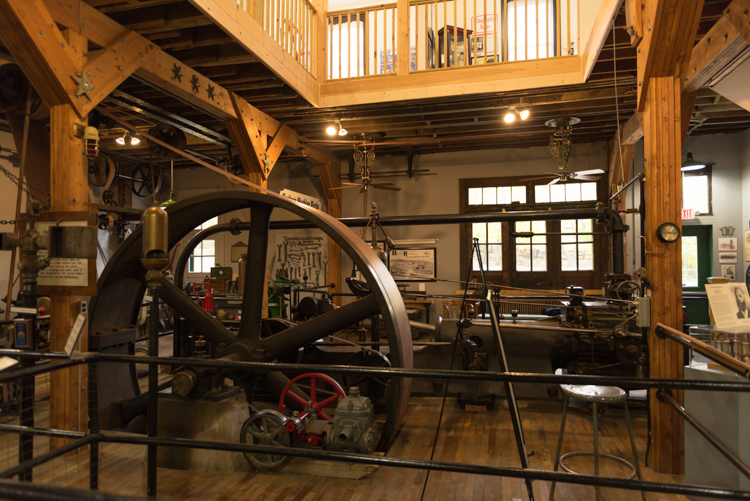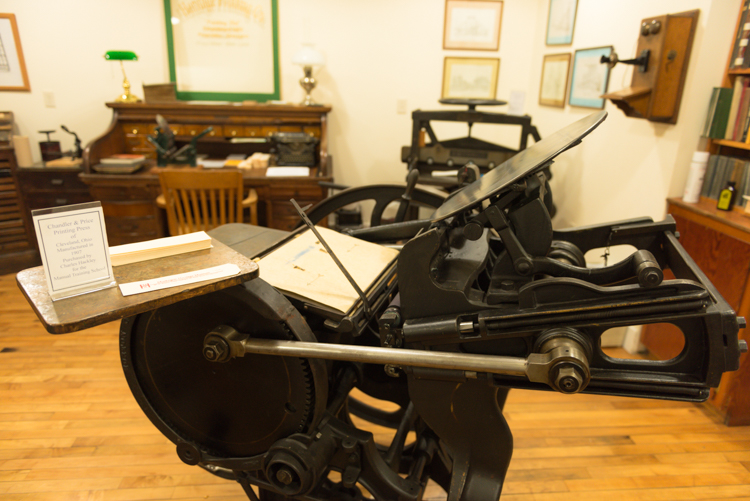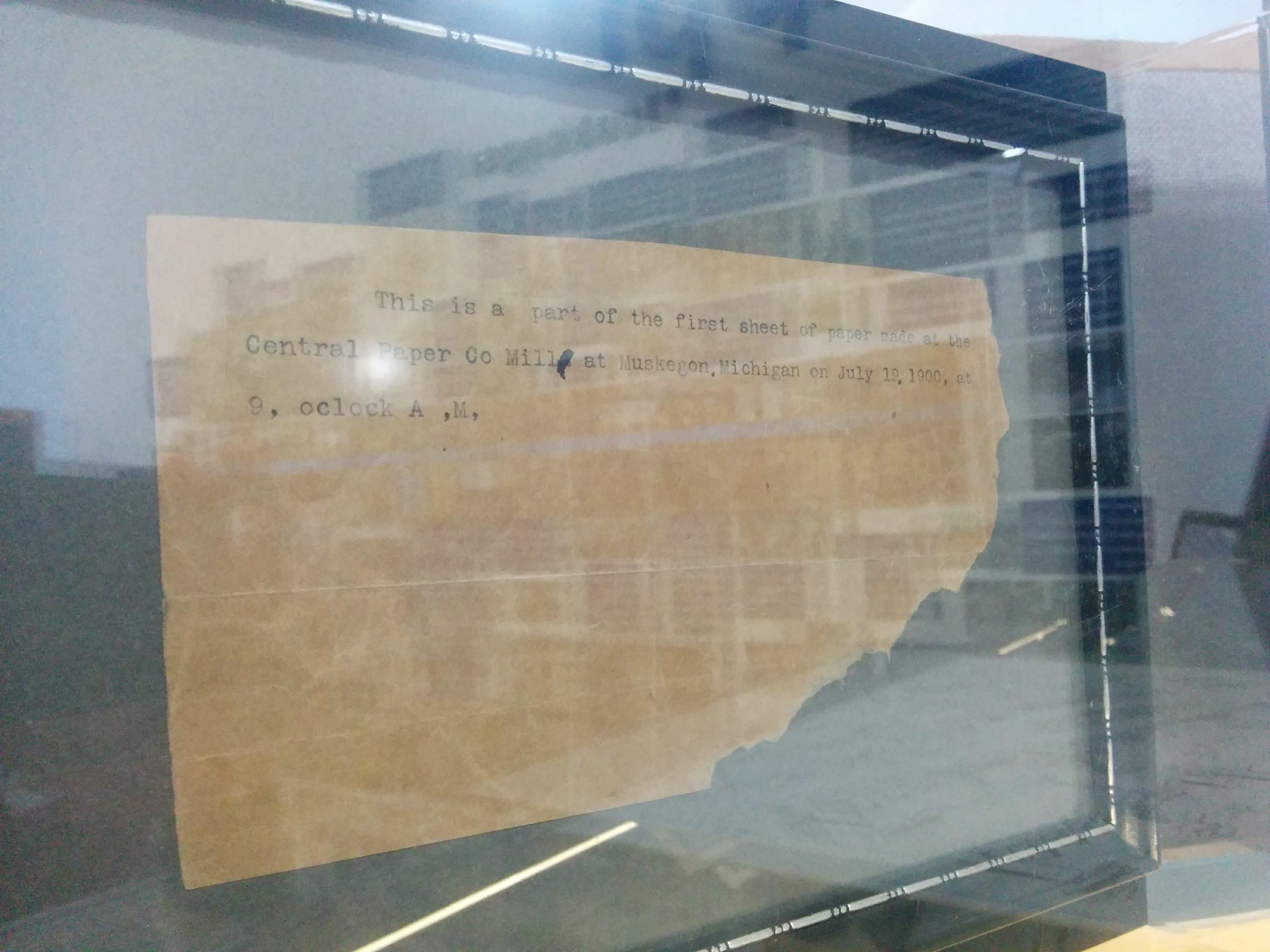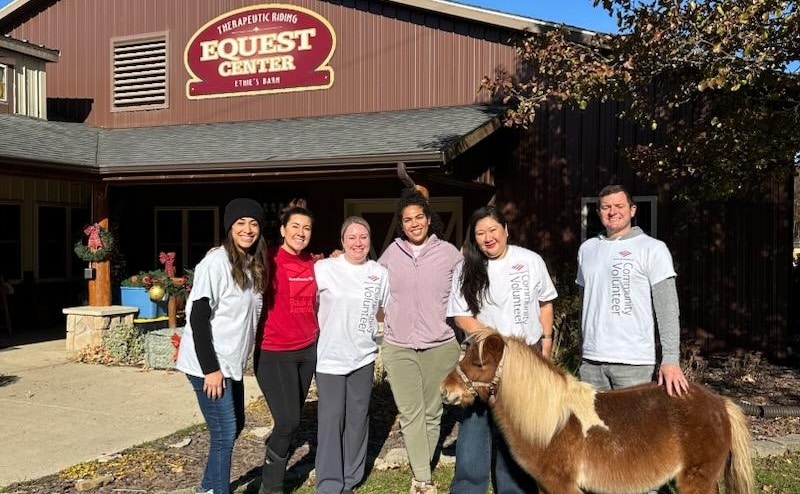The keepers of history: Muskegon Heritage Museum brings city’s vibrant past to life
Did you know many of the nation's bowling pins were once made in Muskegon? As were the first Raggedy Ann dolls? From boats and beer to engines, pianos, and paper, the vast array of products made right here in this city have made their way across the globe for more than a century. Now, the Muskegon Heritage Museum is telling the stories behind these goods, weaving a powerful narrative about the people and places who created the city's rich history.
Did you know many of the nation’s bowling pins were once made in Muskegon? As were the first Raggedy Ann dolls? From boats and beer to engines, pianos, and paper, the vast array of products made right here in this city have made their way across the globe for more than a century. Now, the Muskegon Heritage Museum is telling the stories behind these goods, weaving a powerful narrative about the people and places who created the city’s rich history.
When Louis Green arrived at the Central Paper Company for work each day during the week of April 14 in 1900, he was entering a space that, for many in Muskegon, was a beacon of hope in a city that had sunk into a depression following the decline of the once-mighty lumber industry.
Part of the first wave of employees to work at the factory perched along Muskegon Lake, Green earned 15 cents per 10-hour day for a company that would go on to become one of the city’s largest employers—an entity that, at the turn of the 20th century, inspired hope among factory workers and business owners alike that a city once known as the “Lumber Queen of the Midwest” was not sinking into obscurity, as was the fate for other lumber towns across the United States.
Instead, the factory that would later become the Sappi paper mill was a sign that work could still be found in this town, and it played a starring role in a rapidly growing industrial landscape populated by names like Shaw-Walker, Continental Motors, and Brunswick.
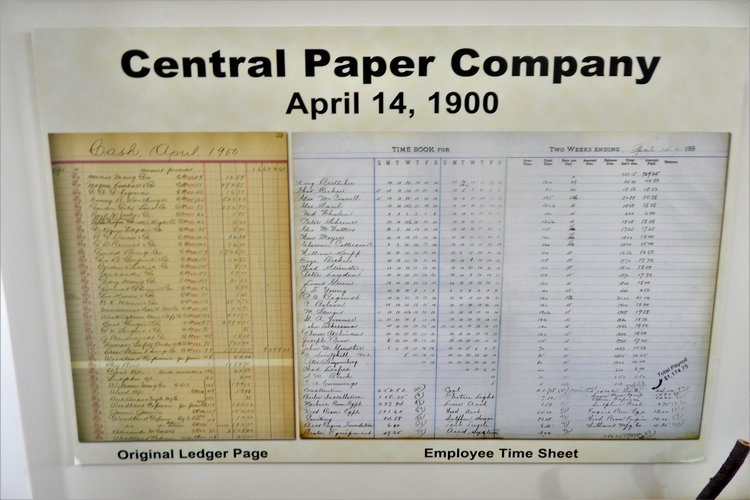
Now, 117 years after Green entered the Central Paper Company at 2400 Lakeshore Dr., the man is gone, but his name remains in cursive letters, joining a roster of 28 of his fellow workers on an employee time sheet from April 14, 1900 that hangs in the Muskegon Heritage Museum. From this piece of paper, we can glimpse a world simultaneously similar and dramatically different from our own; we can, from afar, peek into the day-to-day lives of people populating a city where horse-drawn carriages and electric streetcars navigated Muskegon’s roads, carrying individuals to a bustling downtown filled with places like the ornate Occidental Hotel and Wasserman’s Flower Shop (which is still here and thriving).
Green’s workdays are part of the narratives that fill the 12,000 square feet of space inside the Muskegon Heritage Museum, a piece of a city history made up of thousands upon thousands of everyday voices from lives that have created the Muskegon we now know: a place that, not unlike the Muskegon of 1900, is reimagining its economy, a city that is learning what it takes to soar. Dedicated to showcasing the economic, industrial, and social histories of Muskegon, the museum is brimming with the lives of people who have filled the world’s waterways with boats, made the Raggedy Ann dolls cradled by our children, crafted the bowling pins knocked down by leagues nationwide, and created the pianos that still fill our city with music, including a player piano in the museum and another piano in 18th Amendment, a restaurant that opened in the former Savings and Loan Bank on Western Avenue.
They are the stories of people whose voices haven’t always been heard, narratives that are wildly different from the tales that have been portrayed in the media about Muskegon. They are the builders of the world, the people who have been knocked down by unemployment and sinking economies, but who have always jumped back up to laugh and cry and work and dance in the arms of a city they loved.

“There was an image of Muskegon being a dirty old factory town, but it’s really not. Muskegon has so many marvelous stories,” says Anne Dake, who, along with her husband, Allan Dake, runs the Muskegon Heritage Museum, located in the 521 Western Ave. building that has many of its own tales to tell, having served as a boarding house from the 1920s to the 1970s and then as Mike’s Inn (which is now located nearby at 555 Western Ave.).
“We are passionate about sharing the stories of the people, industries, and companies of Muskegon,” says Dake, a former school librarian who now serves as the museum’s curator. “There are so many stories to tell.”
With deep roots in Muskegon, the Dakes’ chance to grow a museum
Dake and her husband took over the museum, which is owned by the Muskegon Heritage Association, in 2009, and the fact that the couple are now running an institution dedicated to the stories of Muskegon comes as no surprise to those who know them. Both have deep roots in the city, with Anne Dake’s great-great grandfather, Matthew Morton, moving his business, Morton Manufacturing, from Romeo, Michigan to Muskegon Heights in 1891. The business was one of six that Muskegon’s Board of Trade, a group made up of industrialists like Charles Hackley and Thomas Hume and which became the area’s Chamber of Commerce, drew to Muskegon Heights in an attempt to employ the many residents left without work following the collapse of the lumber industry. Morton Manufacturing was run by members of the Dake family through 1971, when Dake’s father, Robert Earl Morton, sold the company.
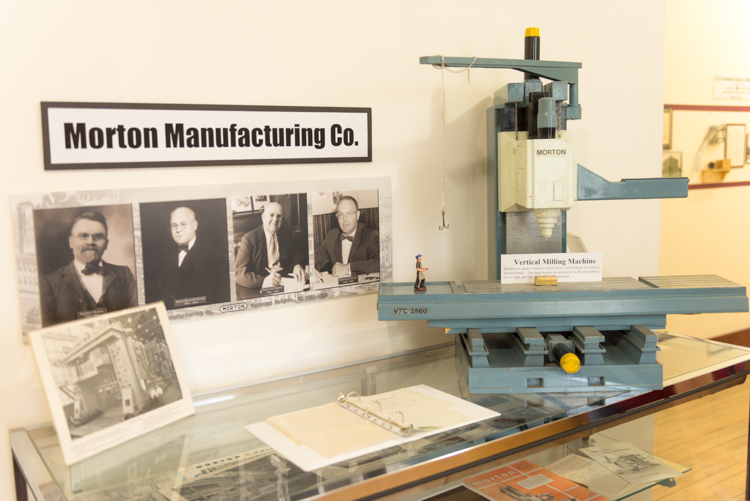
During a childhood filled with her own experiences working at her family’s company, Dake quickly grew to hold a deep appreciation for the employees who dedicated hours, days, years, and decades of their lives to what amounted to often grueling work. And it wasn’t just Muskegon’s workers she respected; she was also enamoured with the pulse of the city and its downtown as a child growing up in the 1950s and 60s.
“I loved downtown,” says Dake, who grew up by White Lake. “We’d get dressed up to come into town; we’d go shopping. I’m an only child, and my dad and I would come downtown to do Christmas shopping. We’d go out to dinner. I have so many memories of downtown.”
After living in Ann Arbor (Anne Dake was a school librarian in Ann Arbor and Allan Dake was a middle school teacher in Ypsilanti) for a couple decades, the couple retired at the age of 51 in 1998 and returned to their home community. In early 2009, they visited the Muskegon Heritage Museum—and what they expected to be an afternoon of tourism ended up changing their lives.
“We came to see the steam engine at the museum,” Dake says, referring to the working 18-ton Corliss valve steam engine that provided electricity to the Stewart Hartshorn Roller Shade Company (located where Fricano’s now operates on Western Avenue) from 1893 through the 1920s. Acquired by the Muskegon Heritage Association, the engine prompted association members to create a museum dedicated to the city’s industrial history in 1983.


“They asked us what we thought of the museum,” Dake continues. “I said, ‘You’ve got neat potential, but there’s no story being told. They asked if we could help out. We thought we’d help for maybe a year; it has absolutely mushroomed.”
By the time the museum opened for the season in May 2009, the Dakes had already grown the space significantly, offering nine new exhibits. Now, the entirely volunteer-run museum offers about 80 exhibits in a space that has gone from about 2,000 square feet to approximately 12,000 square feet. Additionally, the couple has deepened the museum’s pockets, increasing its endowment fund at the Community Foundation for Muskegon County to a little more than $250,000.
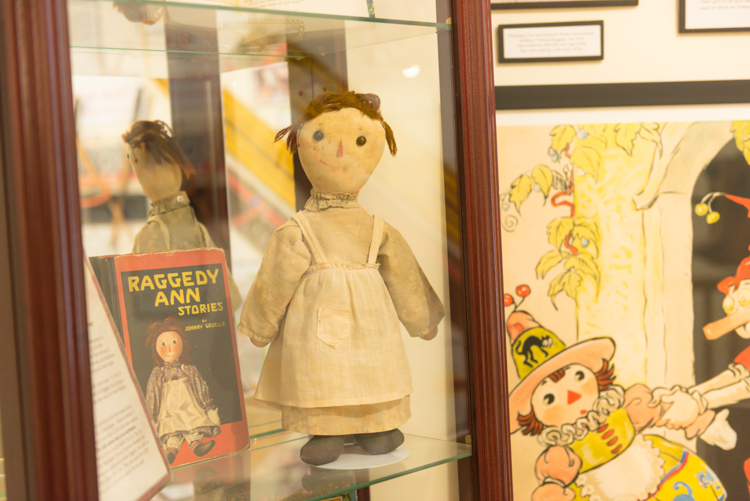

“For the most part, everything you see in the museum, we’ve added,” Dake says, pointing to exhibits that include everything from the history of beer in Muskegon (the Muskegon Brewing Co., Grand Rapids Brewery, and Goebel operated in the Lakeshore Drive space that’s now Cole’s Quality Food, and Muskegon was one of just two places in the United States that bottled Guinness) to an original Raggedy Ann doll made in 1918 and a working bowling pinsetter from Brunswick. Plus, there’s a Chase Hackley player piano that volunteers are happy to serenade visitors with, the steam engine with a line shaft that runs 11 machine tools in the museum’s back room, printing presses, and artifacts and photos from an impressively wide variety of companies that have called, or still call, Muskegon home, such as Sappi, Muskegon Boiler Works, Continental Motors, Shaw-Walker, Beebe Violins, and Alcoa, among many others.
Visitors and volunteers: A rapidly changing museum
When the Muskegon Heritage Association, a nonprofit founded in 1973 to promote Muskegon’s vast historic resources, launched the museum in 1983, they set up the entirety of the facility in what is now the institution’s back room. At the time the Dakes took over in 2009, the museum offered exhibits showcasing two pianos made at the Chase Hackley factory, which was was torn down this fall to make way for a massive mixed-use development named Windward Pointe; the steam engine; and an exhibit about the lumber industry, among a couple other items.
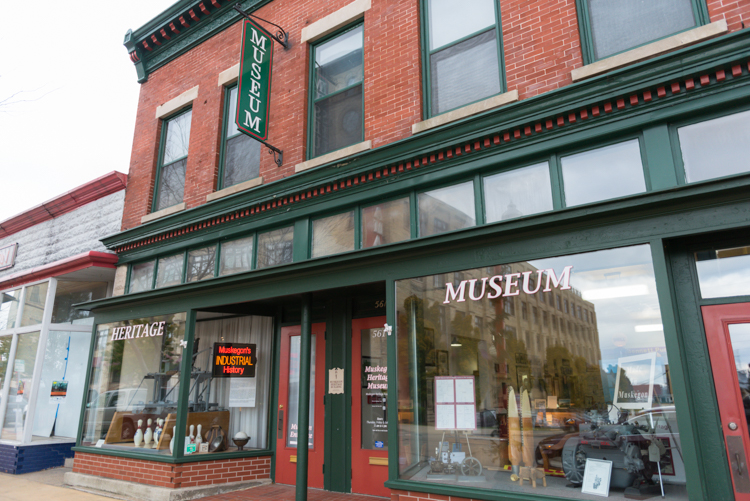
Adding printed information about the items that were already in the museum, as well as opening those nine other exhibits, to make the stories about Muskegon’s history more accessible, the Dakes also worked to quickly grow community engagement with the museum. While they noticed that an overwhelming majority of people they spoke to had never heard of the museum in 2009, that has vastly changed: individuals not only know about the museum, but they’re visiting, volunteering, and sharing their own stories about Muskegon’s history in the numerous notebooks left in the exhibits for visitors to pen their own memories and reflections. Many of those who visit the museum are former factory and business workers, as well as owners—and companies, company heads, and former and current employees have partnered with the museum, donating extensive amounts of material to the museum and financially supporting the creation of new exhibits.
“People bring their kids and grandkids,” Dake says. “Many people are overwhelmed when they come here; they say, ‘Wow, this was made in Muskegon?’ They don’t know that. That’s why we’re doing this.”



The couple too have focused on growing their volunteer base; about 70 active volunteers now donate about 4,000 hours every year. The volunteers there are a tight-knit group, and the individuals from all walks of life, from former librarians to telephone company workers, provide everything from web support and manning the front desk to offering tours to visitors.
“I saw the changes Anne and Allan were making, and I wanted to be a part of that,” Roger Wiitanen says, explaining why he decided to begin volunteering.
Richard Didrickson, who was born and raised in Seattle and moved to Muskegon in 2010 after retiring from Boeing, says he was thrilled to begin volunteering in 2011; now, he’s working on a model of the B.C. Cobb plant for an upcoming exhibit.
“Our volunteers are amazing,” Dake says. “They do everything here.”

Telling the stories of Muskegon, now and in the future
The Dakes have no plans to slow down, and they and their team of volunteers are now working to further expand the museum by adding new exhibit rooms, a library, and a meeting space on the second floor, all of which will be ready for museum members to see in December and unveiled to the public when regular hours resume in mid-May.
New exhibitions will feature the history of the B.C. Cobb plant, which permanently shuttered in April 2016 after operating on the edge of Muskegon Lake for 67 years. Consumers Energy paid $1 million to the North Carolina-based Forsite Development to take control of the 115-acre property, and, following a two-year decommissioning of the coal-fired power plant, the site is slated to become a deep-water terminal operated by the local Verplank Dock Company for cross-Lake Michigan shipping. The model of the B.C. Cobb plant that Didrickson is making will feature the five smokestacks at the Cobb plant during the 1950s.
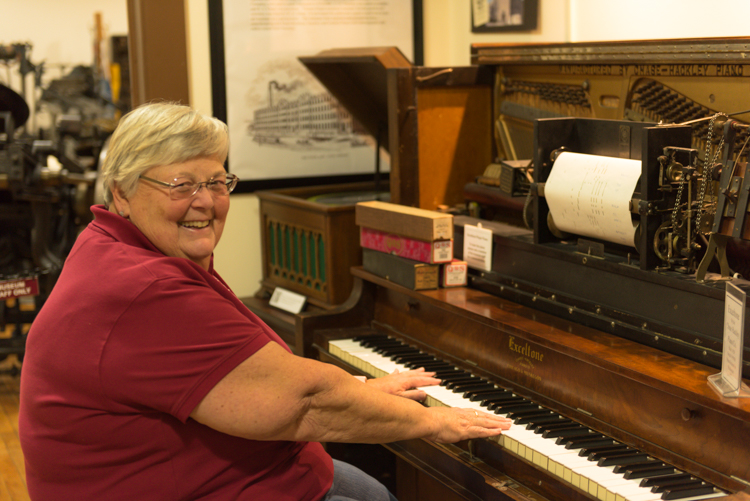
Another upcoming exhibit will highlight the history of the Board of Trade and the Muskegon Lakeshore Chamber of Commerce, which is partnering with the museum to provide the new offering.
And it’s not just the museum’s future Dake is looking forward to; she’s thrilled to see the movement happening throughout Muskegon.
“I’m so excited about what’s going on with development, with the reusing of the old and building of the new,” Dake says. “I love the [Western Market] pop-up shops and the farmers market. There’s a real exciting enthusiasm down here that’s spurring unique development. It’s a very exciting time for downtown, and it’s super to be a part of it.
“In the 1890s through the 1920s, the group of business people in town worked hard to preserve the town, and that’s happening again,” she continues. “Business people are coming forward and saying, ‘We want this town to survive.’ It’s amazing to be a part of that.”
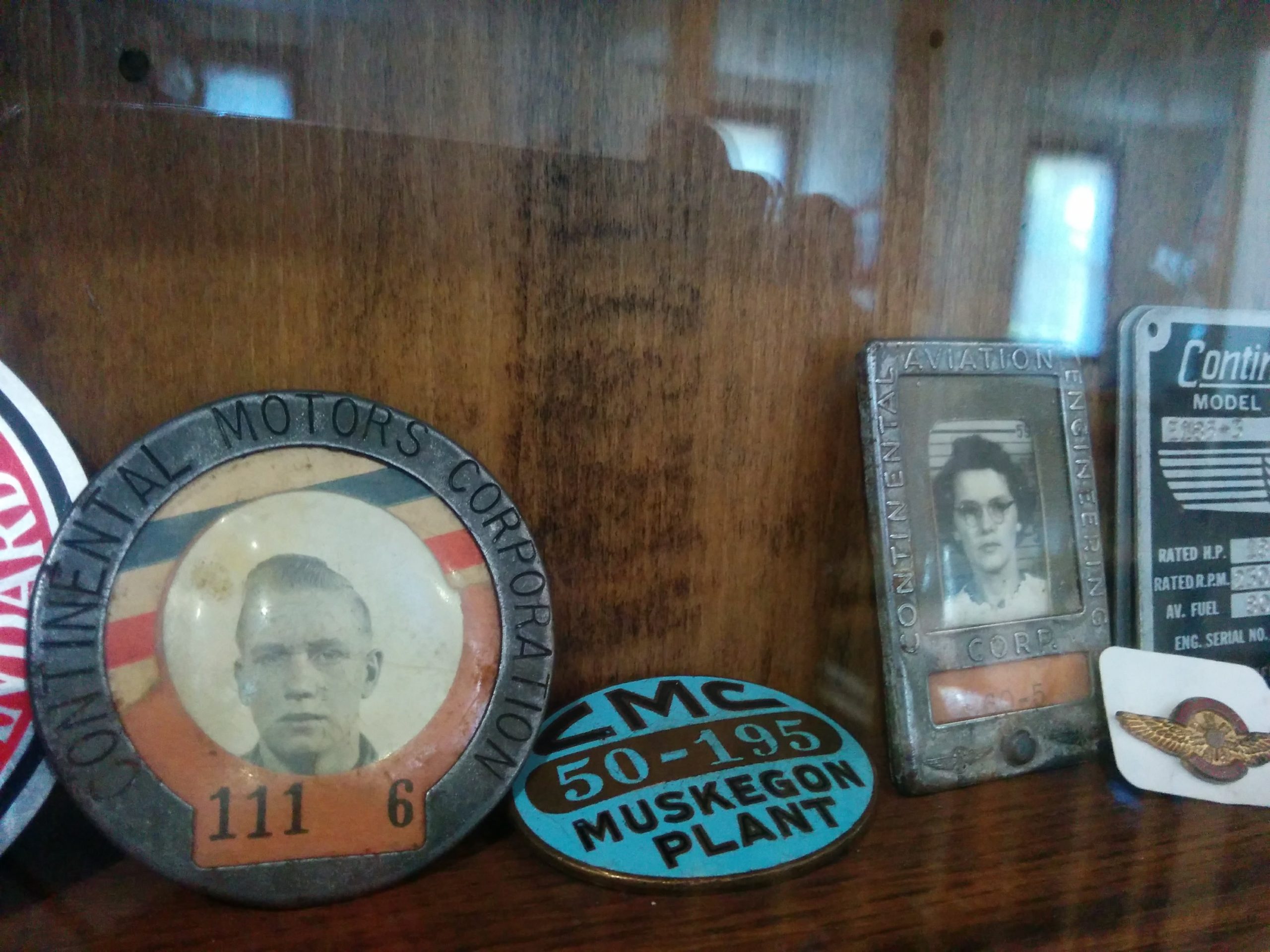
With the extensive changes happening in Muskegon, the city is increasingly drawing tourists from throughout the region, and country, providing a major boost for the museum.
“The cruise ships coming into Muskegon have been absolutely phenomenal,” she continues, referring to the ships that regularly visit the city throughout the summer and fall months. “We had over 1,400 people from the cruise ships visit the museum.”
The Dakes too hope to expand the hours the museum is open; currently, it’s open from 11am to 4pm from mid-May to mid-October, and available by appointment year-round. To achieve this, the Dakes are focusing on fundraising efforts, as well as applying for a grant that would allow them to expand their hours.
“We’re very conscious of the fact that this has been created, and we want it to continue,” Dake says in reference to the museum’s growth. “All of this has been amazing. It’s amazing to hear all these stories. We’re excited to keep telling the stories of Muskegon.”
This story is part of Rapid Growth’s “On the Ground-Muskegon Lakeshore” series, which aims to amplify the voices of the community members who make up Muskegon’s waterfront neighborhoods. Over the next three months, our journalists will be embedded in the city’s lakefront communities in order to dive deeper into topics important to residents, business owners and other members of the community. To reach the editor of this series, Anna Gustafson, please email her at AKGustaf@gmail.com, or connect with her on Facebook.
Support for this series is provided by Downtown Muskegon Now, the Muskegon Business Improvement District, the Muskegon Lakeshore Chamber of Commerce, the Michigan Economic Development Corporation, Pure Muskegon, Watch Muskegon, and the Community Foundation for Muskegon County.
Photography by Jenna Swartz. To connect with Jenna, visit her website and Facebook page.

